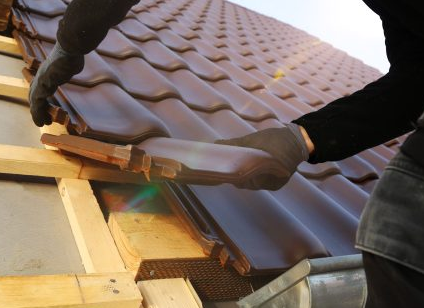Most residential roofing systems have rain gutters Knoxville to collect rainwater flowing off the roof and diverting it away from the house. Other names for a rain gutter include eavesdrop, eaves channel, or guttering. The primary purpose is to protect the foundation by directing the water away from the base. Gutters help reduce erosion, and they can prevent leaks in a basement or a crawl space. They can also protect stained or painted surfaces by decreasing water exposure. Rain gutters also make it easy to collect the rain water for use at a later time such as when drought conditions develop. A cistern or a rain barrel may be used for this water collection.
A wide variety of materials may be used to make rain Gutters Knoxville. These materials include painted aluminum, galvanized steel, zinc, copper, PVC, vinyl, cast iron, painted steel, lead, stone, concrete, and wood. Inexpensive vinyl gutters may cost as little as one dollar per foot whereas ornamental copper gutters may cost as much as 12 dollars per foot. The most popular gutter material is aluminum, because it is lightweight, rust proof, and you can get it in many different colors. Plus it is inexpensive at two dollars per foot.
When you are having gutters installed by a roofing and gutter contractor Knoxville, you have two choices — seamless or sectional gutters. Home improvement stores sell sectional gutters in pieces that must be glued or snapped together. They are inexpensive, but they are prone to developing leaks over time at the joints. Seamless gutters are custom sized on-site with a special gutter machine to be one long piece that fits your roof. They are somewhat more expensive but are much less likely to develop leaks over time. Seamless gutters are often used in new home construction.
The size of your gutters depends on the maximum rainfall amounts in your area, not the average rainfall. If you experience intense storms, you may need to install wider gutters or more downspouts. Gutter width typically ranges from four to eight inches wide, but most are five and six inches wide. A downspout is often called a leader or a conductor and it collects the gutter water so it can be discharged away from the house. Often a splash block is used to disperse the rainwater from the downspout away from the house. The entire design is to protect your house.



